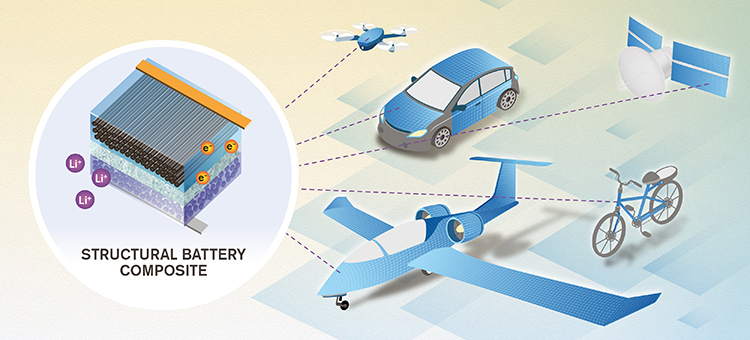The Chalmers University of Technology in Gothenburg has announced a breakthrough in its research into “massless batteries”, which aim to be an energy-storing building material.
According to the university, its latest version of the battery is 10 times more efficient than previous models and paves the way for its use in buildings and vehicles.
The university has been developing the concept for a number of years, along with the KTH Royal Institute of Technology in Stockholm. In 2018 its work was named as one of 2018’s 10 biggest scientific breakthroughs by Physics World magazine.
The batteries are made from carbon fibres of the type already used in making cars and planes. The material combines low weight and strength, and can also store chemical energy and act as an electrical conductor.
The battery uses carbon as its cathode and aluminium foil coated with lithium iron phosphate as the anode. The two are separated by glass fibre, which also acts as an electrolyte.
Chalmers’ latest battery has an energy density of 24 Watt hours per kilogram, compared with 60-90 Wh/kg for a conventional lithium ion design. The university says this energy would go further if used in an electric vehicle since it would not have to carry the weight of a conventional battery, which can be around 200kg.

Chalmers University’s graphic showing the make-up of the battery and its potential uses (Yen Strandqvist)
It adds that its stiffness is 25 gigapascals, compared with around 75GPa for aluminium, which means “the structural battery can really compete with many commonly used construction materials”.
Leif Asp, the professor leading the project, commented: “Previous attempts to make structural batteries have resulted in cells with either good mechanical properties, or good electrical properties. But here, using carbon fibre, we have succeeded in designing a structural battery with both competitive energy storage capacity and rigidity.”
The Swedish National Space Agency is now funding a new project to upgrade the battery, with the aim of reaching an energy density of 75Wh/kg and a stiffness of 75GPa.
Asp said: “The next generation structural battery has fantastic potential. If you look at consumer technology, it could be quite possible within a few years to manufacture smartphones, laptops or electric bicycles that weigh half as much as today.”
Image: Researchers Johanna Xu and Leif Asp examine a structural battery cell (Marcus Folino/Chalmers University)
Further reading:






